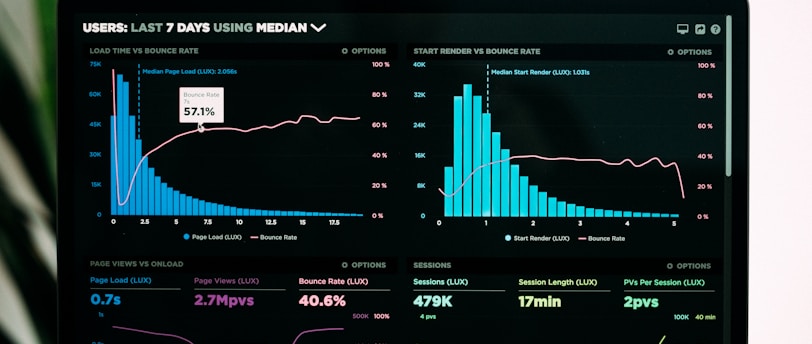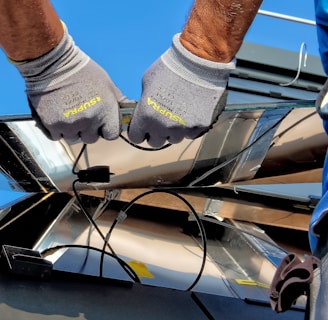
8 Steps to Install EV Chargers
How to install EV chargers at your location
BUSINESSES


Introduction
As we progress towards a greener future EV charging is becoming much more topical. People are transitioning to electric and more people are driving EV’s every day. You may be considering installing EV chargers at your business. If so, you came to the right place. I’ll give you step by step guidance and tell you everything to look out for.
If you’re here you’re probably had a few employees or customers ask about EV charging. Or perhaps you’ve realized EV charging can be an additional revenue stream. Whatever prompted you to do some research you’re on the right track. Adding EV charging to your business location is a great idea and brings many benefits.
1. Intention
But first, you’ll want to decide who the chargers are intended for.
For Employees
If the chargers are exclusively for employees, the process is more simple. You can often offer EV charging for free without needing an extensive network system to manage payments. The cost of electricity will be covered by the business through its electrical bill. You should anticipate an increase in electricity costs but it won’t break the bank. This will be a nice benefit to offer employees and will provide convenience. Also, BC Hydro will provide a rebate if the chargers are used strictly by employees.
Rebate Amount
You will be eligible to receive up to $2,000 per charger. For example, if you add two chargers to your business and apply for a rebate, BC Hydro will send you a cheque for $4,000. The rebate process involves completing some forms online, including the chargers serial numbers and the electricians project quote. Submitting forms to the government is never very fun but BC Hydro has a team dedicated to assisting with the process. A few phone calls and you should find someone to help walk you through everything.
For Customers
When planning EV chargers for customer use, several factors need to be considered. Providing EV charging can attract more customers and create an additional income stream. These chargers need to be networked and connected to an app for payment management. You also need to set the rate for charging your customers. BC Hydro typically charges around 12 cents per kilowatt, so it's advisable to research other chargers in your area for rate comparison. Unfortunately, BC Hydro doesn't offer rebates for EV chargers intended for customer use. While I disagree with this, I've expressed my thoughts in another post: https://strongenergy-ev.com/businesses-8-reasons-to-add-ev-charging
2. Find Electrician
Most people may not realize that EV charging projects are predominantly handled by electricians, not the EV charging companies themselves. The electricians will be the first people you reach out to kick-start the process. Before choosing an electrician you’ll want to do some research. Make sure to check out their website and review which EV charging projects they’ve completed. EV charging should be a big portion of their website. Don't forget to read their reviews and ask them during your conversation if EV charging is a large part of the services they offer.
3. Preparation
There is some preparation you can do yourself to make the process smoother before the electricians arrive. Here are some questions you should keep in mind as they will influence the project. The electricians can help you with this too but it’s better to anticipate the questions beforehand:
Firstly, consider the number of chargers you’ll need and whether they'll be strictly for employees or offered to customers as well. Assess how many of your employees currently drive EV”s and if any other are considering driving electric in the near future. You’ll also want to know the distance they’re driving each day (range requirements). Evaluate if there have been any past concerns about limited electrical in the building. By addressing these questions in advance, you’ll save time and money throughout the process and ensure you’re receiving the best options for your needs.
4. Site Visit
Here we go. Once you’ve chosen an electrician give them a call to schedule a time for them to come by for what’s called a “Site Visit”. This is when they visit the location to assess the project and provide a quote. You’ll want to allocate between 30 mins to an hour of your time. It’s best to be with them and ask questions while they look at the building.
EV Charger Location
First they’ll need to see where you thought was the best spot for the chargers. They’ll provide guidance on if this is the most ideal location or if another spot is recommended. Usually you’ll want to have the EV chargers as close to the electrical room as possible to reduce the costs of installation
Electrical Room
Next they’ll need access to the electrical room. They’ll look at the panels and the service available in the building. They’ll run a few calculations to see if there is enough electrical available to sustain the chargers. The main thing they’re trying to determine is the kilowatt output (speed) of the chargers. The chargers will need to be connected to their own dedicated breaker. Ideally your chargers will be fast. I’d say fast is considered anything above 7 kilowatts for level 2 chargers. The chargers I usually recommend are close to 10 kilowatts which need a 60 amp breaker. I reviewed the speed calculations in another post shown here: https://strongenergy-ev.com/what-are-the-3-levels-of-ev-charging
Cost of Installation
The true reason for the site visit is to determine the cost of installation for the project. The installation cost is always more expensive than the chargers themselves. The cost of installation will depend on many things such as distance of electrical room from the chargers, if they have to upgrade the power, number of chargers for the install, and wall mounted or pedestal mounted chargers. The last point is a big one. You always want to try and install wall mounted chargers (rather than pedestal mounted) because it will be about half the cost.
Pricing
They will also be able to determine the type of internet connection for the chargers albeit Wi-Fi or cellular. With all these factors the cost of installation varies drastically. To be on the safe side I would overshoot the price and budget $6,000 per charger for installation. This doesn’t include the cost of the charger itself. Charger prices range as well based on the quality of the charger. My favorite charger is one of the highest qualities on the market and costs close to $2,500. However you can also get fairly decent chargers for closer to $1500. All this to be said, you would be safe in budgeting for $10,000 per charger for installation and hardware. Keep in mind there will also be a monthly networking fee to use the app as well as a internet fee per month.
Return on Investment
You’ll also be making a profit from the chargers and will be able to calculate your break even point within a few months of installing the chargers. You’ll now be making a profit from the chargers which will help pay off your project over time. You will set the fee per kilowatt to use the chargers. Let’s say you’re billing 32 cents a kilowatt and BC Hydro is charging you 12 cents per kilowatt. If you have a 10 kWh charger then you’ll be making 20 cents of profit. Keep in mind that the EV Charging company you choose will most likely take a percent of the profit. This is called Revenue Share.
5. Choosing an EV Charging Supplier
Now comes the fun part. Most electricians work with a variety of different EV charging companies. They’ll usually have special agreements with each. After the installation quote is determined they will present you with a list of the EV Charging company options. Whether you choose Flo, HyperCharge, Swtch or any of the other various company they’ll all work differently. The electrician should present all the options and include the features and benefits of each They’ll often point you in the right direction on which supplier they recommend but ultimately the decision is yours.
If you tell the electrician what your main goal is with the chargers they’ll point you in the right direction. For example, if your main goal is to make money from the chargers then you’ll want an EV charging company that takes a low percentage of revenue share. That way most of the profit stays in your pocket. Another thing to consider is the monthly networking fee. This can often be expensive anywhere from $20/month per charger to $100/month per charger. Make sure you clarify the networking fee for each option.
Negotiations
Most EV charging companies are new. The industry is young and ever changing. This means they aren't all necessarily set in their ways. This allows some flexibility when negotiating because they’ll often accommodate offerings to get your business. This is where negotiations come in.
Service Coverage & Warranty
When starting negotiations, understand what is most important to you. You can’t fight for everything. But if you understand your main objective then that’s what you’ll aim for. Anything else is just extra. A big one to look out for is the service coverage and warranty. The biggest problem with EV chargers is they don’t always want to stay connected to the network. The last thing you want to deal with on a busy work day is figuring out how to reconnect the EV chargers to the network while customer are complaining. You’ll need to make sure the EV Charging company has your back. It’s best if they have a maintenance team local and close by for support. Most problems can be fixed remotely through the software but you don’t want to be left high and dry to figure it out yourself.
6. Green Light Project
Once the project has been given the green light, you should pay the electrician's deposit for the project. You should also ask them for a timeline and inquire about whether building permits are required. It may also be beneficial to see if the electrician can apply for rebates on your behalf and submit the necessary documents.
7. Prepare for Installation
Before starting the installation of EV chargers, confirm with the electrician if there will be a need to shut off the electricity at the business during the installation. Additionally, inform the employees that electricians will be on-site to install the chargers.
8. Upstart & Commissioning
Typically, the EV charging company will dispatch someone to commission the chargers and initiate their operation. Ensure you're present during this process to learn how to use the app and set the billing rate. It's advisable to inquire if the company can establish an idle fee to discourage users from occupying the charging spot beyond their vehicle's charging time. However, be cautious that the idle fee isn't set too high, as this could lead to a negative customer experience and potentially lose business.
Return on Investment
You should consult with your EV charging company regarding who sets the billing rate, and ask for their recommendations on setting this rate. With this information, you can roughly estimate the return on investment period, which should ideally be under two years for you to break even. Additionally, it is essential to know exactly how much your utility company charges per kilowatt. Pay special attention to "peak demand" charges that can increase the rate per kilowatt during certain times.
Off to the Races
Once everything is set up, it is expected that people will be eager to use the new EV chargers. It would be beneficial to create a press release on LinkedIn to advertise the chargers to customers, but this should only be done once you are certain that the chargers are working effectively.
Conclusion
In conclusion, integrating EV chargers into your business is a valuable step towards a greener future and a smart investment. It not only provides a much-needed service to the growing community of EV drivers but also showcases your commitment to sustainability. It can cultivate customer loyalty and attract new clientele, all while creating an additional revenue stream. Remember to do your research, work closely with your chosen electrician, and choose an EV charging company that aligns with your business needs. Despite the initial investment, the return in terms of value and impact is immense. As we move towards a more sustainable future, your business can proudly stand at the forefront of this change.
As always, I'm here if you have questions or if I can help in anyway.
Thanks for staying tuned,
Strong Energy










